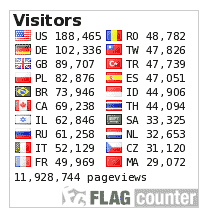The Realization of Casual Conversation Features of EFL Learners
Keywords:
conversation, negotiation, spontaneity, interpersonality, interactivityAbstract
This study was descriptive qualitative, which aimed at explaining the casual conversation features between two learners and its functions in terms of negotiation meaning, spontaneity, interpersonality, and interactivity. To obtained data, firstly, recording the conversation was done, continued by transcribing, coding, and the last was analyzing the findings. The findings showed this conversation was dominated by exchange information and idea between the speakers rather than exchanging feelings because logico-semantic appeared more dominant than interpersonal negotiation. In terms of spontaneity feature, it could be shown by the learners’ laughter during the conversation. Meanwhile, interpersonality features occurred were filled pauses, repetition, false start, and chunk. Then, interactivity features were turn-taking, back-channeling, and discourse markers. Also, those number of features and its functions implied in this casual conversation have an essential contribution. For instance, filled pauses can be used to take time to think of what is going to say. This study suggests that further research investigates how cultural and gender affect the speakers’ spoken features in monologue and dialogue speech, and also both formal and non-formal situations
Downloads
References
Bilal, G. E. N. Ç., Mavasoglu, M., & Erdogan, B. A. D. A. (2010). Types and functions of repetitions in the narrations of Turkish speakers of French. NOVITAS-ROYAL, 4(2).
Bussmann, H. (1998). Routledge Dictionary of Language and Linguistics. New York: Routledge.
Cutrone, P. (2010). The backchannel norms of native English speakers: A target for Japanese L2 English learners. Language Studies Working papers, 2, 28-37.
Gardner, R. (2001). When Listeners Talk: Response Tokens and Listener Stance. Amsterdam: J. Benjamins Publishing.
Friginal, E. and Benjamins, J. (2009).The language of out sourced call centers: A corpus-based study of cross-cultural interaction. International Journal of Corpus Linguistics, 15(4), 549-556.
Kovac, M. M. (2016). Repetitions as a communication strategy: A case study. Studies in English Language Teaching, 4(1), p.87-103.
Kjellmer, G. (2009). Where do we backchannel?: On the use of mm, mhm, uh huh and such like. International Journal of Corpus Linguistics, 14(1), 81-112.
Li, H. Z., Cui MEd, Y., Wang Ph, Z. D., Prufer Leske, I., & Aguilera, L. (2010). Backchannel responses and enjoyment of the conversation: The more does not necessarily mean the better. International Journal of Psychological Studies, 2.
Lackman, K. (2011). Teaching Collocations: Activities for vocabulary Building. KenLackman & Associates Educational Consultants.
Rabab'ah, G. (2013). Strategies of repair in EFL learners' oral discourse. English Language Teaching, 6(6), 123-131.
Reinders, H. (2014). Backchannelling in the language classroom: improving student attention and retention with feedback technologies. The Journal of Language Learning and Teaching, 4(2), 84-91.
Rieger, C. I. (2003). Repetitions as self-repair strategies in English and German conversations. Journal of Pragmatics 35 (1), 47-69.
Schiffrin, D. (1987). Discourse Markers. Cambridge: Cambridge University Press.
Sharifi, S., & Azadmanesh, M. (2011). Speakers' cues inviting back channel responses in spontaneous Persian conversation. Us-China Foreign Language, 9.
Thornbury, S. (2005). Beyond The Sentence: Introducing Discourse Analysis. Macmillan Education.
Vanderstoep, S. W., & Johnston, D. D. (2009). Research Methods for Everyday Life. USA: Jossey-Bass.
Wardhaugh, R. (2006). Introduction to Sociolinguistics: Fifth Edition. Blackwell.
Young, R F., & Jina, L. (2004). Identifying units in interaction: Reactive tokens in Korean and English Conversations. Journal of Sociolinguistics, 8, 380-407.
Published
How to Cite
Issue
Section
This is an open-access article distributed under the terms of the Creative Commons Attribution-ShareAlike 4.0 International License which permits unrestricted use, distribution, and reproduction in any medium. Users are allowed to read, download, copy, distribute, search, or link to full-text articles in this journal without asking by giving appropriate credit, providing a link to the license, and indicating if changes were made. All of the remixes, transform, or build upon the material must distribute the contributions under the same license as the original.











